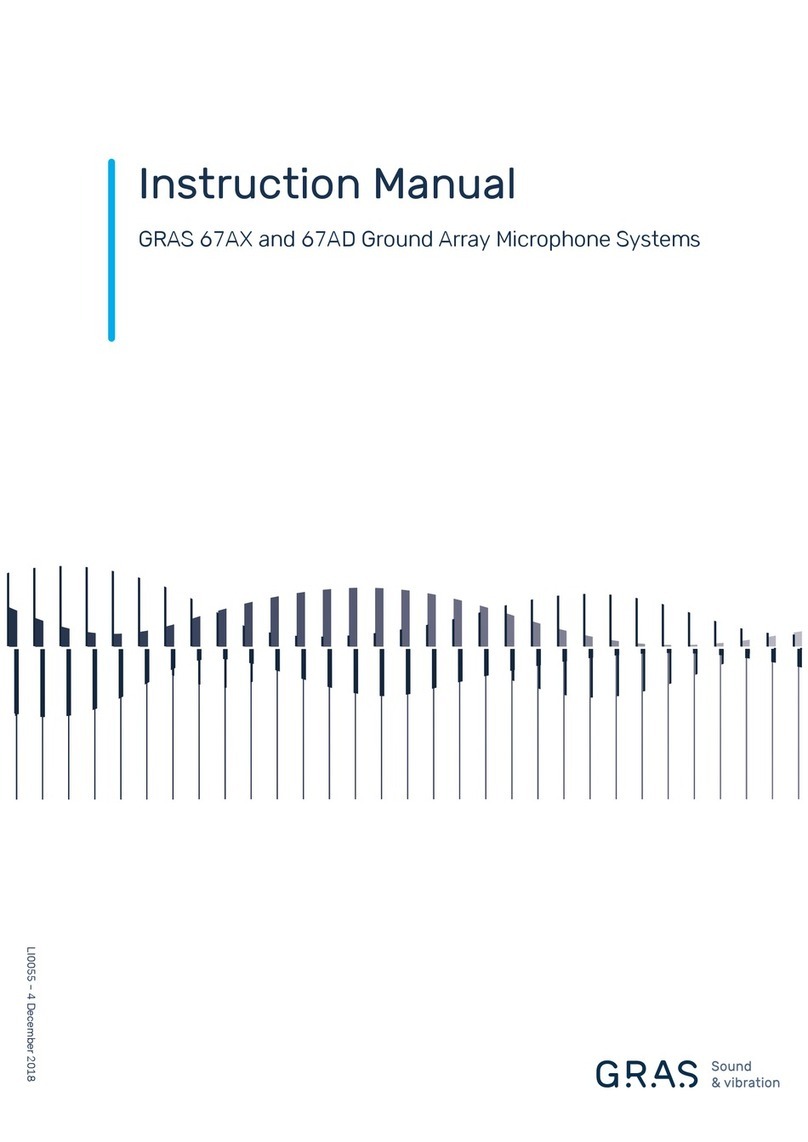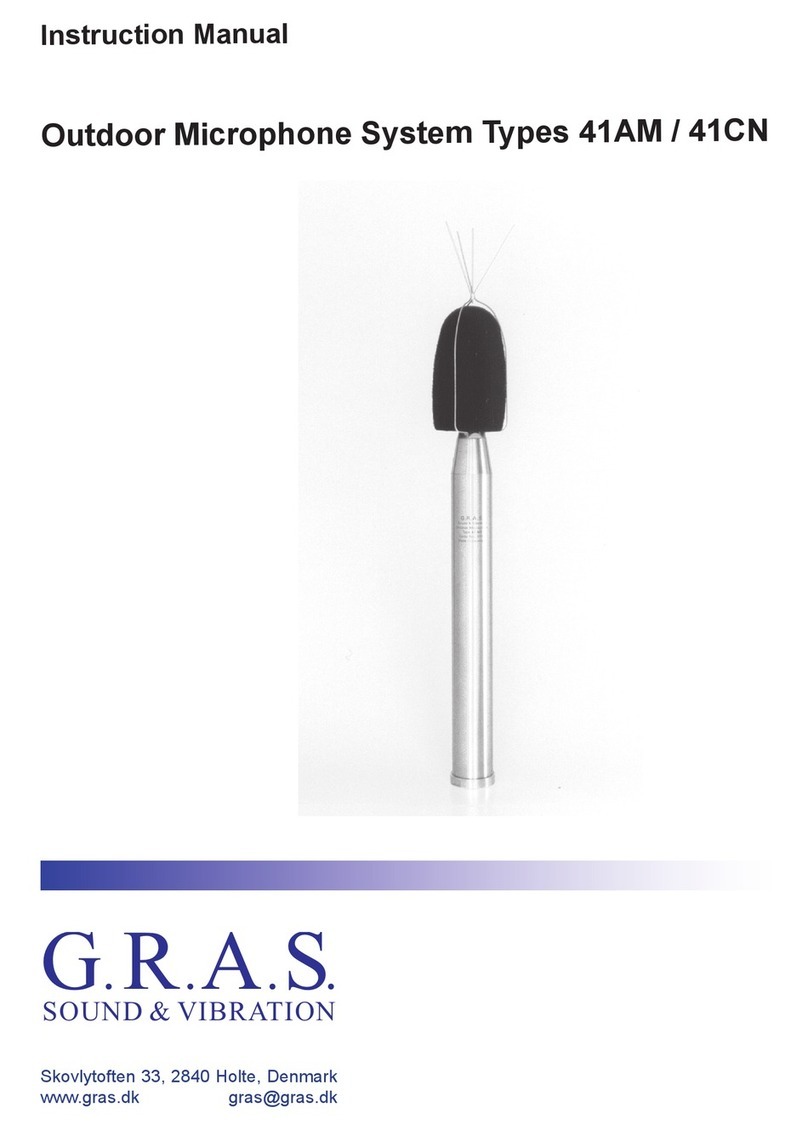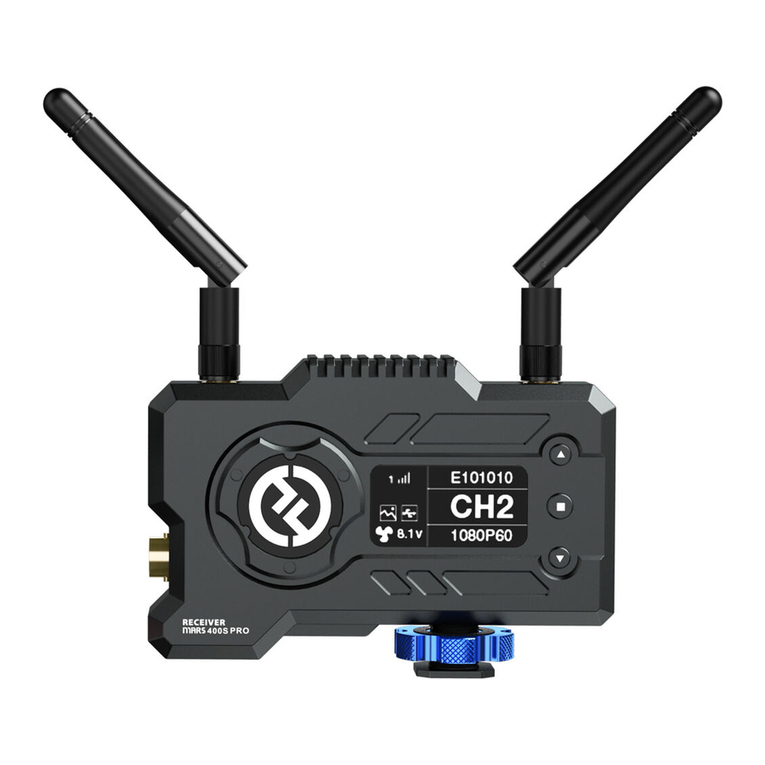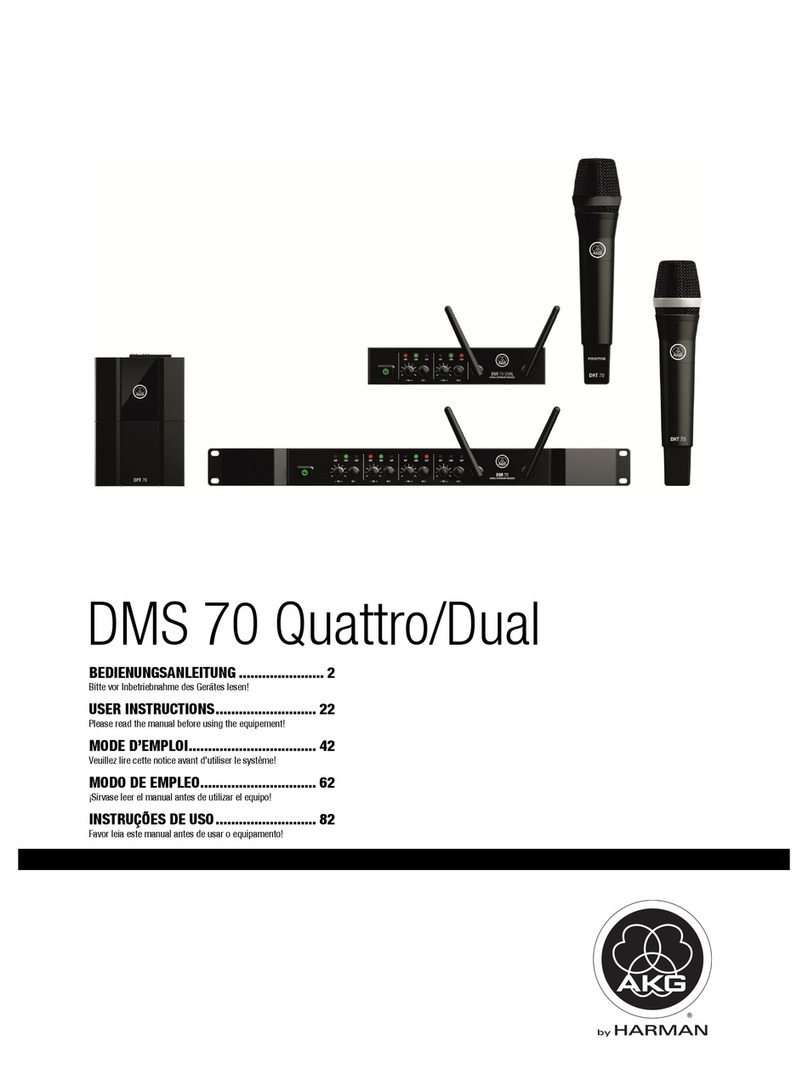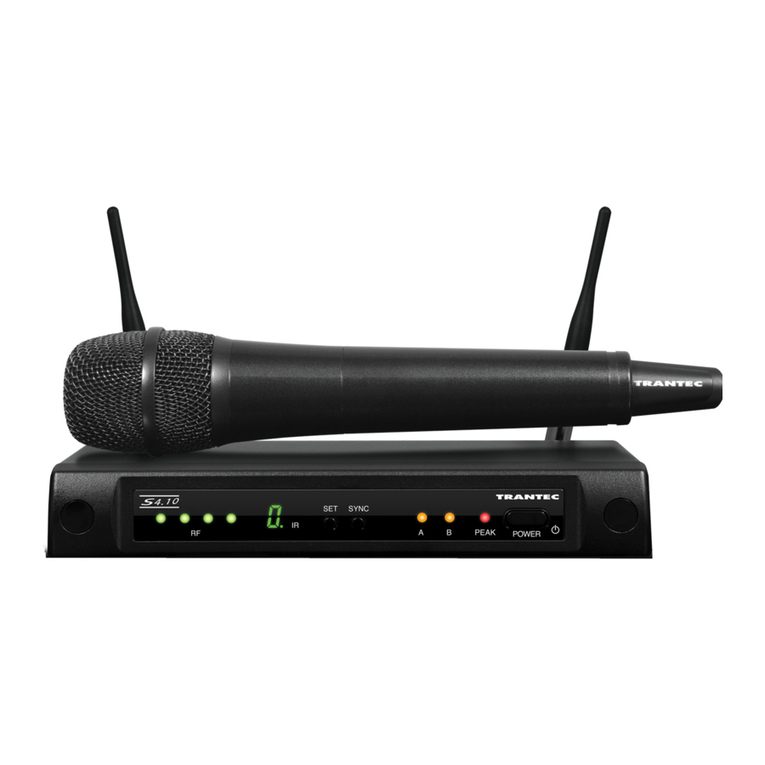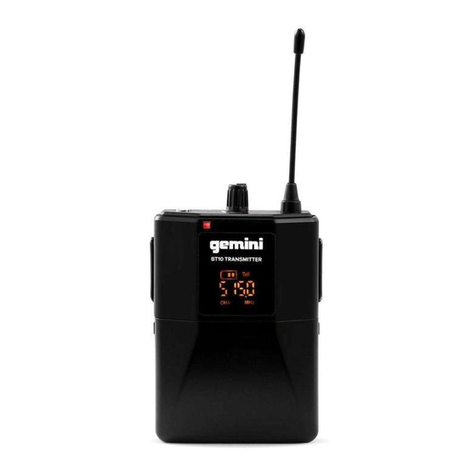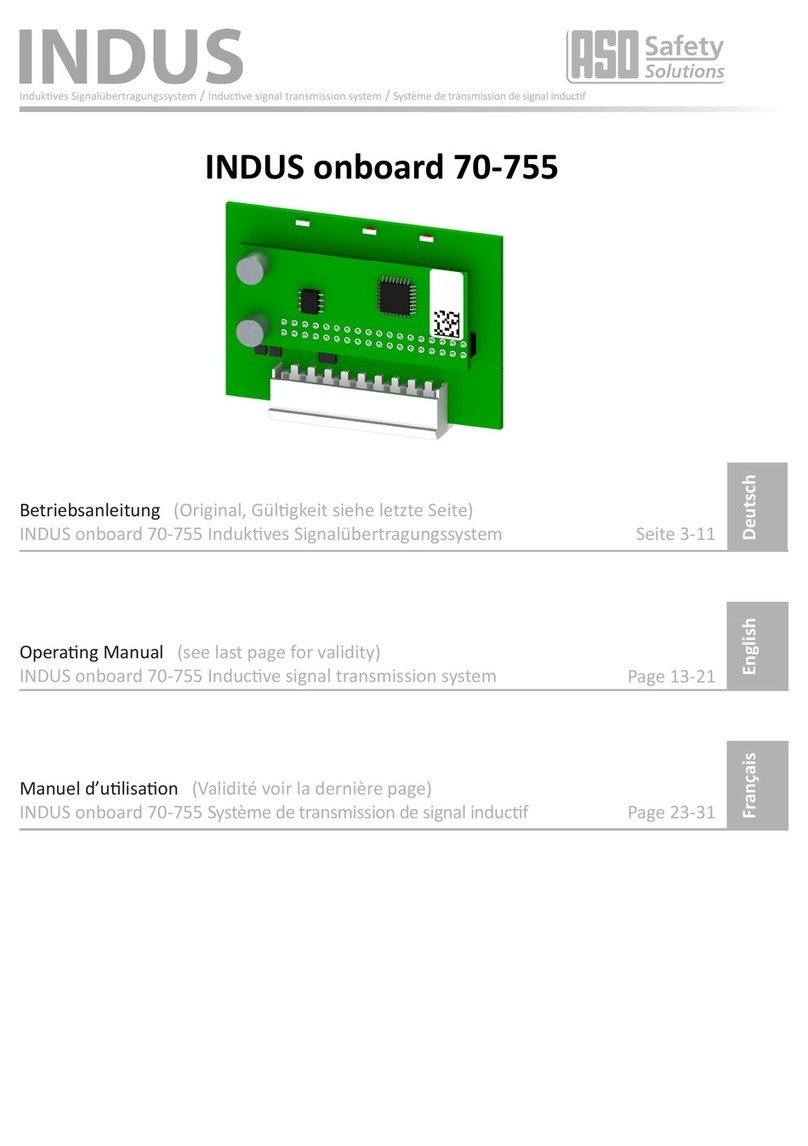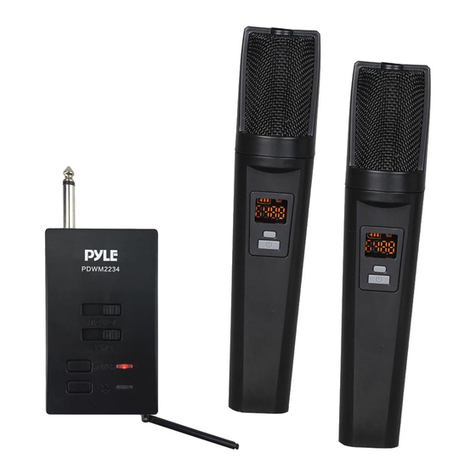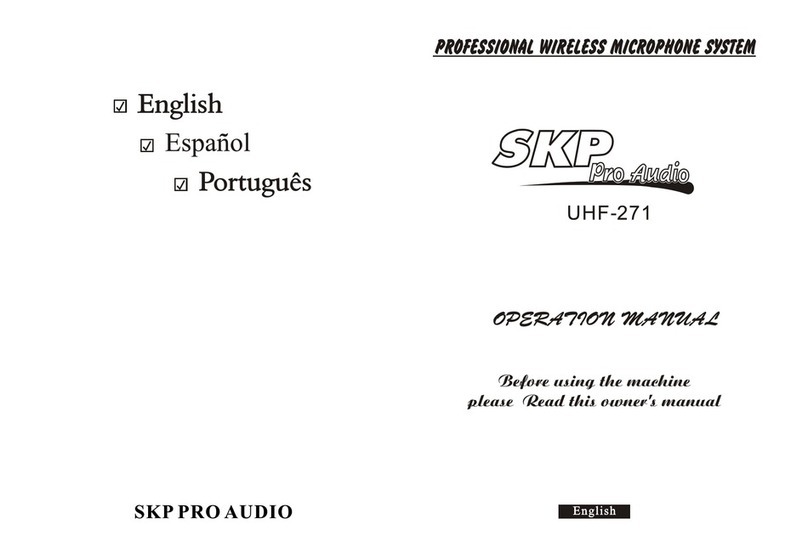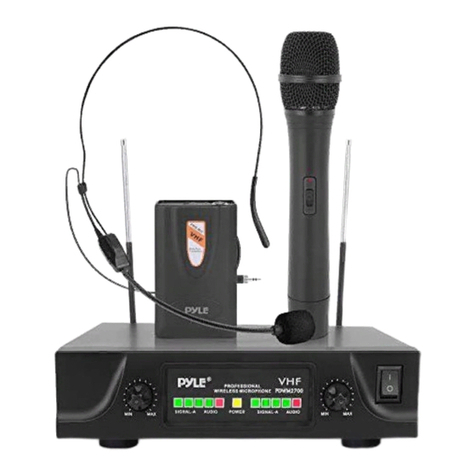G.R.A.S. Type 40HL User manual

www.gras.dk
LI0107 - Revision 7 September 2012
Instruction Manual
½” Low-noise Microphone System Type 40HL

2
Revision 7 September 2012
Contents
Introduction.............................................................................3
Calibration ..............................................................................5
Based on System Sensitivity ....................................................................... 5
Pistonphone Calibration .............................................................................. 5
Frequency Response Calibration................................................................... 6
Operating Type 40HL ................................................................7
Specifications ..........................................................................8
Accessories..............................................................................8

3
LI0107 - Revision 7 September 2012
Fig 1.1 ½″ Low-noise Measurement Microphone
System Type 40HL
Introduction
The G.R.A.S. ½" Low-noise Microphone System Type 40HL (Fig. 1) measures sound pressure
levels well below the threshold of human hearing. It is thus generally suitable for sound-power
measurements on even very quiet products. Its very wide dynamic range permits measurements
down to below – 2dB re. 20μPa (in ⅓-octave bands) from 20Hz to 20kHz.
Type 40HL comprises:
• a special high-sensitive ½" condenser free-field microphone
• a dedicated ½" low-noise preamplifier.
IMORTANT!
The preamplier and microphone are an individually matched combination that is assembled and
sealed under clean-room conditions.. For it to retain optimal performance, do not separate the
microphone from the preamplifer .
Type 40HL connects to most standard power modules with LEMO 1B connector (optional accessories
from G.R.A.S. - refer to the section What to Order):
The power modules supply voltages for powering preamplifiers and polarizing microphones.
Preamplifier
The preamplifier is a true ½" low-noise amplifier with LEMO 1B connector and has a built-in
compensation filter for free-field microphones.
Microphone
The microphone is a ½" low-noise externally-polarized free-field microphone with a specially reduced
inherent noise floor in order to achieve a high dynamic range and wide frequency range. Its diaphragm
is specially tuned to yield high sensitivity coupled with low internal-noise generation.
Frequency Response and Noise Floor
A typical free-field response of Type 40HL for 0° is shown in Fig. 1.2.
Fig. 1.3 shows free-field corrections for various angles of incidence on the ½" microphone.
Operating Type 40HL
For holding the microphone, you can order Tripod AL0006 and Tripod Adapter RA0093
For level calibration of Type 40HL you need:

4
LI0107 - Revision 7 September 2012
Fig 1.3 Free-field corrections for various angles of incidence on the ½"microphone
Fig 1.4 Typical noise floor of Type 40HL for system
and microphone. Shown in ⅓-octave bands for both the
linear and A-weighted cases.
Fig 1.2 Typical frequency response curves of Type 40HL
• either Pistonphone Type 40AP (recommended due to its built-in precision barometer) or
Pistonphone Type 40AA
and
• Calibration Adapter RA0090 for attenuating the pistonphone signal to 94 dB re. 20μPa.
See also the section What to Order.
100kHz10kHz1kHz100Hz
Decibels re. level at 250 Hz
-6
-4
-2
0
2
4
6
8
10
180º
Random incidence
150º
120º
0º
30º
60º
90º
0º
90º
120º
-8
14
12

5
LI0107 - Revision 7 September 2012
Fig 2.1 Pistonphone without its normal coupler
and ready to accept the Coupler RA0090
Calibration
Based on System Sensitivity
Since the microphone signal is amplified by 20dB in the preamplifier, the nominal system sensitivity
at the output of the preamplifier corresponds to 0.85V/Pa. In other words, when the measured output
voltage from the preamplifier is 0.85V RMS, the microphone is being subjected to 94dBre.20μPa.
The actual system sensitivity is given on the individual calibration chart supplied with each Low-noise
Microphone System Type 40HL.
Based on this information, proceed as follows:
1. Connect the Type 40HL via its LEMO plug to the LEMO input socket of the analyzer.
2. Connect via a suitable cable the BNC output of the power module to the analyzer to be used,
and switch both power module and analyzer on.
3. Adjust the analyzer to indicate 94dB re. 20μPa for an RMS input of S volts; where S is the
system sensitivity of the Type 40HL as quoted on the calibration chart.
Pistonphone Calibration
Use either Pistonphone Type 42AP, with built-in precision barometer (recommended), or Pistonphone
Type 42AA, fitted with a Coupler RA0090 (all items available from G.R.A.S.) to produce 94dB re.
20μPa on the microphone of Type 40HL.
IMPORTANT!
A pistonphone fitted with a normal ½" coupler cannot be used because this will overload the
system with a level of 114 dB re. 20μPa.
Proceed as follows:
1. Connect the Type 40HL via its LEMO plug to the LEMO input socket of the power module.
2. Connect via a suitable cable the BNC output of the power module to the analyzer to be used,
and switch both Power Module and analyzer on.
3. Unscrew and remove the normal coupler of the pistonphone.
4. Screw Coupler RA0090 to the pistonphone, see Fig. 2.1.
5. Push-fit ½" Adapter RA0181 shown Fig. 2.1 to the entrance of Coupler RA0090.
Adapter for
½" microphone RA0181

6
LI0107 - Revision 7 September 2012
Fig 2.2 Pistonphone fitted with Coupler RA0090 and the microphone inserted into the coupler. The spring arrange-
ment supplied with the coupler is not used.
6. Mount the microphone of the Type 40HL in the Coupler as shown in Fig. 2.2, and switch the
Pistonphone on.
7. Adjust the analyzer to indicate 94dB* re. 20μPa.
Frequency Response Calibration
The frequency response of the microphone has been factory-calibrated in a free field (anechoic
chamber) by comparison with a reference microphone.
* Plus any corrections for barometric pressure. See pistonphone manual.

7
LI0107 - Revision 7 September 2012
Fig 3.1 Setup for measurements: Type 40HL mounted on Tripod AL0006 viaTripod Adapter RA0093
Operating Type 40HL
1. Mount Type 40HL onto a stand (e.g. Tripod AL0006 with Tripod Adapter RA0093)
G.R.A.S.
Power Module
Type 12AK
Gain
+20
+10 +30 +40
+50
0
HP Dir
Lin AW
Filter
Overload
Inst. Latch
SysCh.
Adjust
Power
On
Ovl.
Reset
Low
Batt.
Signature Series
Output
Input
Type 40HL
Power module
Analyzer

8
LI0107 - Revision 7 September 2012
Specifications
Accessories
Low-noise Microphone System Type 40 HL comprising:
½ Microphone, free-field, ext.-polarized
½ Preamplifier (with LEMO 1B plug)
Frequency response:
12.5Hz - 10kHz: ±1.0 dB
10Hz - 16kHz: ±2.0dB
6Hz - 20kHz: +2.0dB, –3.0dB
Nominal sensitivity, system:
850 mV/Pa ±2 dB
Microphone polarization voltage:
200V
Power supply:
+/− 15 V to +/− 60 V or 30 to120 V
Power consumption:
max 5 mA
Dynamic range:
Upper limit: 113dB re. 20μPa
Lower limit (inherent noise): 6.5dBA re. 20μPa
Temperature range:
–20°C to +60°C
Power Module (2-ch., batt.-op.): Type 12AA
Power Module (1-ch., batt-op.): Type 12AD
Power Module (1-ch.): Type 12AK
Power Module (2-ch.): Type 12AQ
Windscreens (set of 5) AM0069
Pistonphone, built-in precision barometer
(250Hz or 251.2 Hz, 114dB +/− 0,05 dB): Type 42AP
(recommended)
Pistonphone
(250Hz, 114dB +/− 0,08 dB): Type 42AA
Pistonphone Coupler (94dB re. 20μPa): RA0090
(required for both pistonphones)
Tripod: AL0006
Tripod Adapter (required): RA0093
3-m Extension cable*: AA0008
10-m Extension cable*: AA0009
30-m Extension cable*: AA0012
______
* These cables also function as connection cables
(to connect directly from Type 40HL to a power module).
WEEE directive:
2002/96/EC
CE marking directive:
93/68/EEC
Manufactured to conform with:
RoHS directive:
2002/95/EC
G.R.A.S. Sound & Vibration continually strives to improve the quality of our products for our customers; therefore,
the specifications and accessories are subject to change.
Table of contents
Other G.R.A.S. Microphone System manuals
Popular Microphone System manuals by other brands
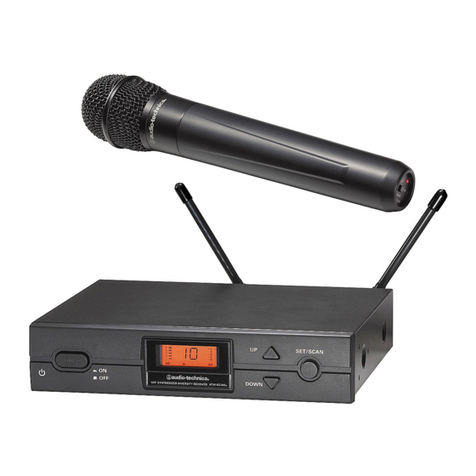
Audio Technica
Audio Technica ATW-2120 Installation and operation manual
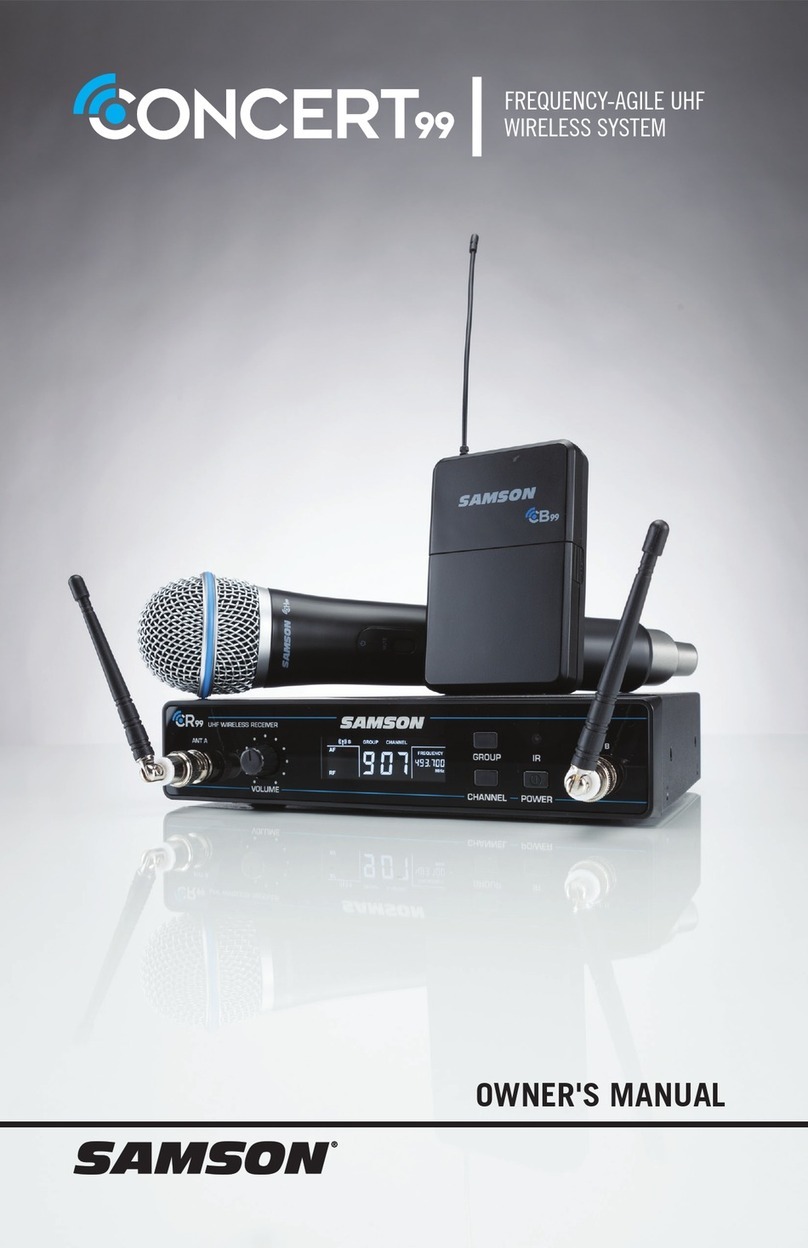
Samson
Samson Concert 99 SWC99HQ8-D owner's manual

Litelink
Litelink VCT-1001 operating instructions
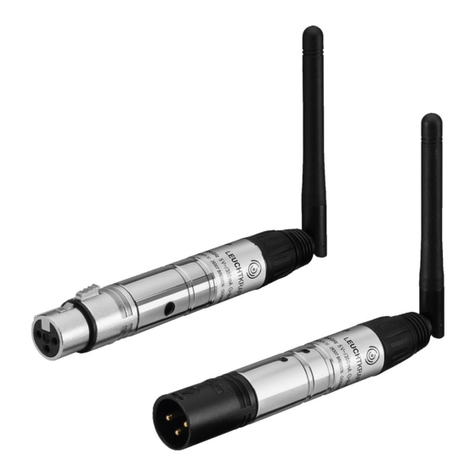
Monacor
Monacor IMG STAGELINE WDMX-3F instructions
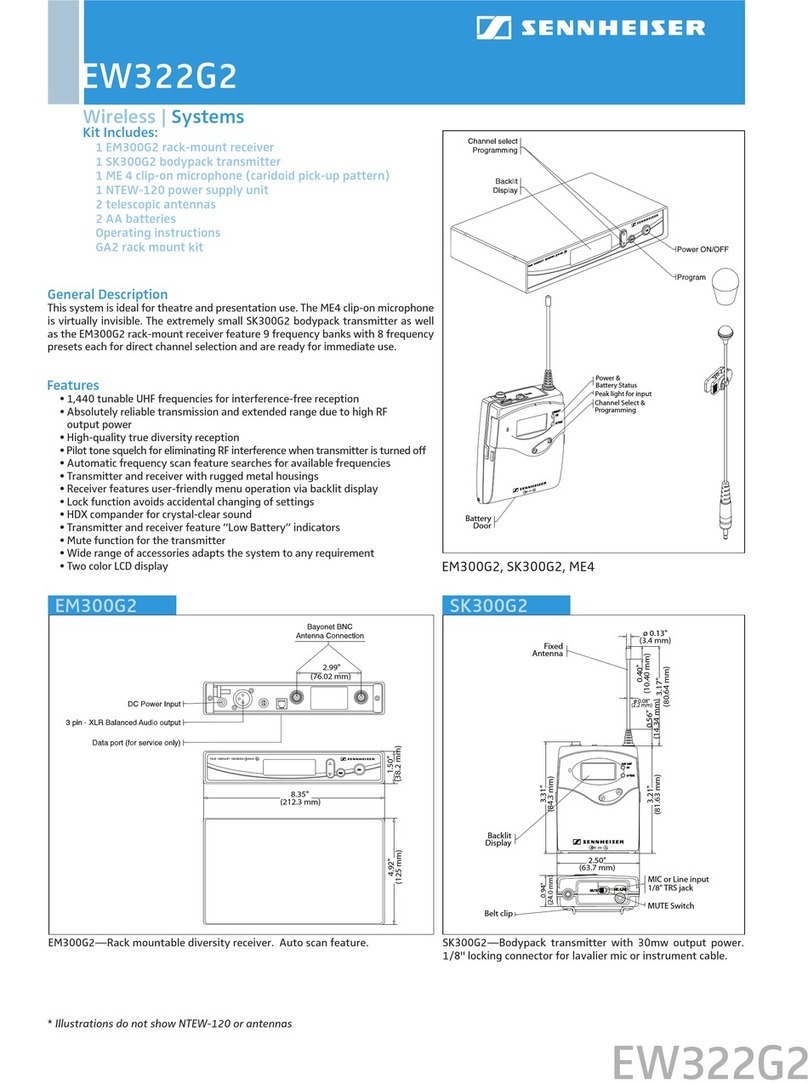
Sennheiser
Sennheiser EW 322 G2 operating instructions

Takstar
Takstar VF-289 user manual
